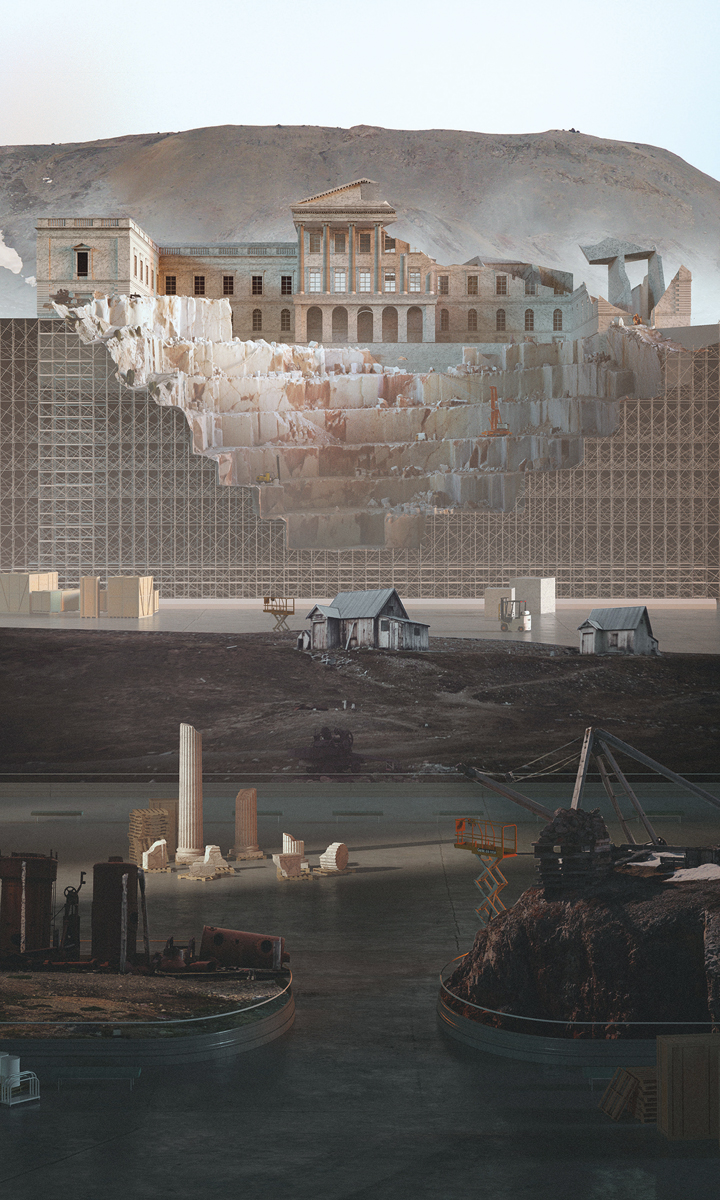The Museum of Natural History to Ultima Thule
Brandon Eli John Bergem
WINNER OF A 2019 CANADIAN ARCHITECT STUDENT AWARD OF EXCELLENCE
Brandon Eli John Bergem, University of Toronto
Thesis Advisor: John Shnier

The Museum of Natural History to Ultima Thule engages the histories of two Arctic islands. One is an archaic fantasy; the other exists in reality, but is challenged by environmental change.
For centuries, the northernmost regions of the world were mysterious. The supposed discovery of a remote island called “Thule” led to rampant speculation about the north. The island would be mythologized as “Ultima Thule” (furthest Thule) by poets, cartographers, and early explorers. It came to symbolize the edge of the unknown world.
Today, the actual Arctic Archipelago of Svalbard hosts the world’s most northern permanent settlement. The islands were discovered in 1596, and featured in a revised edition of Gerardus Mercator’s arctic projection map. Svalbard is a peculiar island, as the most remote location in the world. Claims of sovereignty are disputed. Century-old detritus—remnants from the age-of-exploration and early exploitation—have become cultural monuments. The landscape is nearly barren of vegetation, but carries fossilized imprints of grand primordial ferns. Scientific instruments littering the mountains attempt to register the changing climate, while Russian and Norwegian coal mines continue their work of extraction.

Highly documented and surveyed, Svalbard has eliminated the notion of Thule as an off-the-map marker of the unknown. At this same moment of cartographic clarity, the archipelago is being consumed by climate change. Mountains are crumbling from rain-induced landslides, glaciers are retreating from view, and the descending permafrost is destabilizing the ground. Like the mythical Thule, Svalbard’s future is uncertain.
This thesis posits the disappearance of the islands as an inevitability. It uses drawing as a means to explore, re-imagine and re-constitute the realities, legends, devastation and plausible futures of the island.

The drawings depict the familiar, authoritative context of a natural history museum. In the fictitious Museum of Natural History to Ultima Thule, the imagined future is represented as the past. The chronicles
of Svalbard are told through ten theatrical mise-en-scènes, each presenting part of the museum. Dioramas show taxidermied animals deformed by toxins, the luxurious Hotel at the End of the World being consumed by rising sea levels, and an army of drones attempting to shore up the island’s crumbling rock faces, pebble by pebble.
The museum itself is shown as being in a state of incomplete assembly, suggesting that catastrophe has already struck. Visible scaffolding supports landscape facsimiles and partially installed backdrops, spilled paint and wet floors hint at melting glaciers, boxed-up taxidermy renders the scenes slightly uncanny.
The Museum of Natural History to Ultima Thule explores drawing and architecture as mediums for storytelling. It reflects on Svalbard’s real complexities as the stuff of future mythology.

Jury Comments
Rami Bebawi :: These images are so beautiful. They have the capacity to embody both critical statements and nostalgic historical compositions.
Joe Lobko :: I could linger over these incredible drawings and the tales they evoke for hours. This is a magical dissertation on place and time.
Cindy Wilson :: If myth is the past and fantasy the future, this project makes me ponder how our fantasies become myth.
